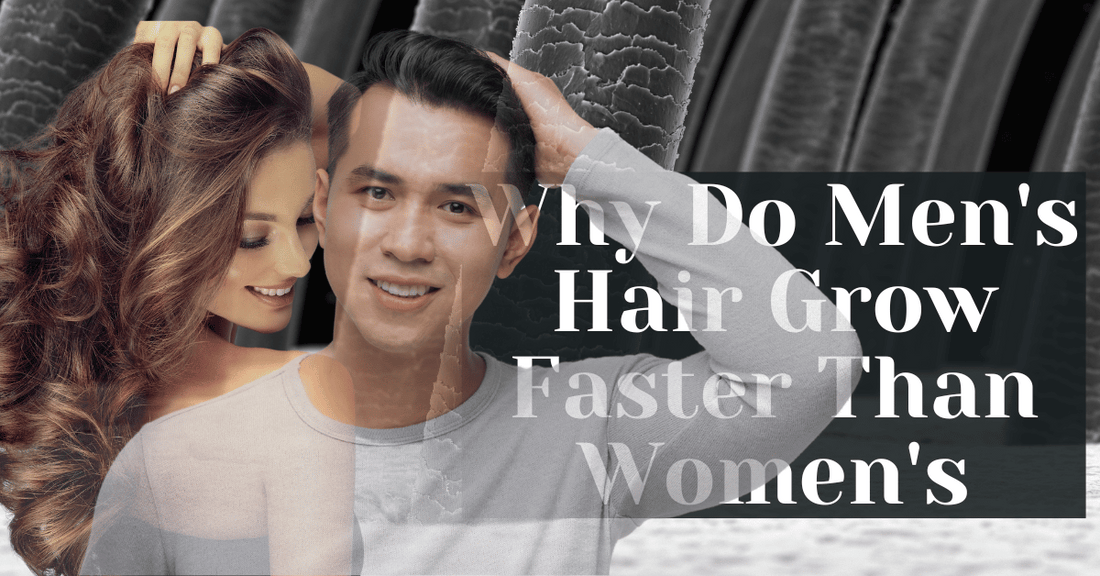
Why Do Men's Hair Grow Faster Than Women's
Hair growth is a fascinating subject that often brings up a variety of questions and assumptions. Among the most commonly discussed is the apparent difference in hair growth rates between men and women. Many of us have noticed or at least heard the claim that men’s hair seems to grow faster than women’s, but what truth lies behind this observation?
Is it mere anecdote, or is there scientific evidence to back it up? Interestingly, both men and women have the potential to grow hair at the same rate, challenging some of the common myths surrounding this topic.
In this article, we delve deep into understanding the dynamics behind hair growth rates. We’ll explore whether men’s hair truly does grow faster than women’s and, if so, what factors contribute to this difference.
By examining everything from hormonal influences to genetic factors and lifestyle impacts, we aim to provide a comprehensive look at this intriguing topic. Additionally, we will touch upon how human history has shaped our understanding of hair growth, referencing insights from works like 'Hair: A Human History' to shed light on the biological and historical aspects of this phenomenon.
So, guys, if you’ve ever wondered, “Why do men’s hair grow faster than women’s?” you’re in the right place. Join us as we unravel the science and myths behind hair growth rates across genders, providing insights that might surprise you.
We will debunk the myth that men's and women's hair grows at different rates, emphasizing that they actually grow hair at the same rate, and explore the natural biological functions that contribute to the perceived differences in hair length between genders.
Understanding the Basics of Hair Growth
Before diving into the specifics of gender differences in hair growth rates, it’s essential to understand the fundamental mechanisms of how hair grows, including why women typically have longer hair than men. Three separate phases make up the cycle of hair growth: anagen, catagen, and telogen. Each of these phases plays a crucial role in the health and length of hair.
What Determines Hair Growth Rate?
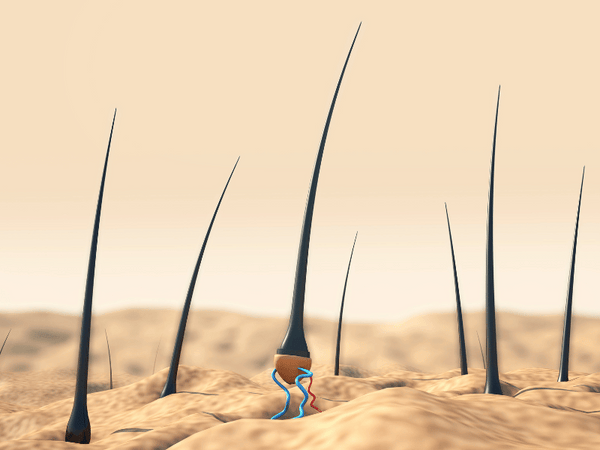
The rate at which hair grows is influenced by several factors, but it primarily depends on the genetics and the duration of the anagen phase—the growth phase of the hair cycle. During the anagen phase, which in humans can last anywhere from two to six years, hair follicles are actively producing new hair cells.
After this, the hair enters the catagen phase, a transitional period that lasts about two weeks, during which the hair follicle shrinks. Finally, during the telogen phase, which lasts around one to four months, the hair rests. At the end of the telogen phase, the hair falls out, and a new hair begins to grow, thus restarting the cycle.
It's noteworthy that while genetics play a significant role, the characteristics of male hair, including its growth rate, are influenced by these factors, with both men and women generally having the same growth rate, though differences in hair handling and styling among females, as well as the impact of testosterone, can affect the appearance and length of male hair.
Differences in Male and Female Hair Characteristics
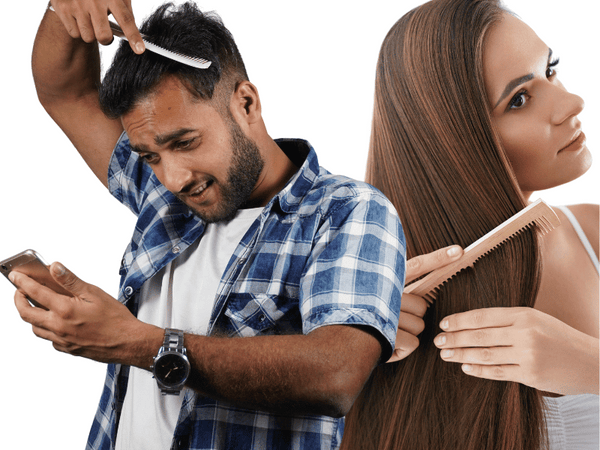
Men and women's hair differs not just in growth rate but also in other characteristics such as density, diameter, and texture. Generally, men's hair follicles are denser, especially in the beard area, which could contribute to the perception of faster growth. Additionally, the diameter of individual hair strands often differs by sex, with men's hair being coarser on average.
Scientific Factors Contributing to Faster Hair Growth in Men
While the basic mechanisms of hair growth are similar across genders, certain biological and hormonal differences significantly influence the rate at which hair grows. Here, we explore some of the key scientific factors that explain why men’s hair might grow faster than women’s.
Notably, research published by John Wiley & Sons highlights the pivotal role of testosterone in these differences, providing a scientific foundation for understanding how hormones impact the hair growth cycle.
The Role of Testosterone in Hair Growth

One of the most significant contributors to hair growth differences between men and women is the hormone testosterone. Testosterone, which is present in higher levels in men, plays a crucial role in hair growth, particularly in promoting the anagen phase.
This hormone not only increases the length of the anagen phase but also enhances the size of the hair follicles, resulting in thicker hair strands. Hormonal differences, especially the roles of testosterone and estrogen, contribute to women having longer hair by affecting the duration of the hair growth cycle, with estrogen counteracting testosterone and decreasing the resting phase, thus keeping women in the growing phase longer.
In women, the lower levels of testosterone mean a shorter anagen phase and smaller follicle size, which generally leads to thinner and less dense hair compared to men. Additionally, the enzyme 5-alpha-reductase converts testosterone to dihydrotestosterone (DHT), which can further influence hair growth.
Interestingly, while DHT promotes hair growth in areas like the beard and body, it can also contribute to hair thinning on the scalp, particularly noticeable in men predisposed to male pattern baldness.
Genetic Influences on Hair Growth Rates

Genetics also play a bit of a pivotal role in determining hair growth rates. The genetic makeup of an individual can dictate not only the length of the hair growth cycle but also the density and texture of the hair. Certain genetic traits that promote faster and thicker hair growth are more prevalent in men due to their chromosomal makeup and hormonal profile.
Research has identified specific genes involved in the regulation of the hair cycle, such as those that influence the response of hair follicles to testosterone. These genetic factors are passed down through generations and can vary significantly between males in different populations and families.
External Factors That Impact Hair Growth
In addition to genetic and hormonal influences, various external factors can significantly affect hair growth rates. These include nutritional intake, lifestyle choices, and environmental conditions. Understanding how these elements play a role can help individuals optimize their hair health, regardless of gender.
Moreover, lifestyle choices and cultural norms often lead to a preference for short hair, especially among men. This preference not only reflects personal grooming habits but can also impact hair health, highlighting the importance of considering how such choices contribute to the overall condition of hair.
Nutritional Influences on Hair Growth
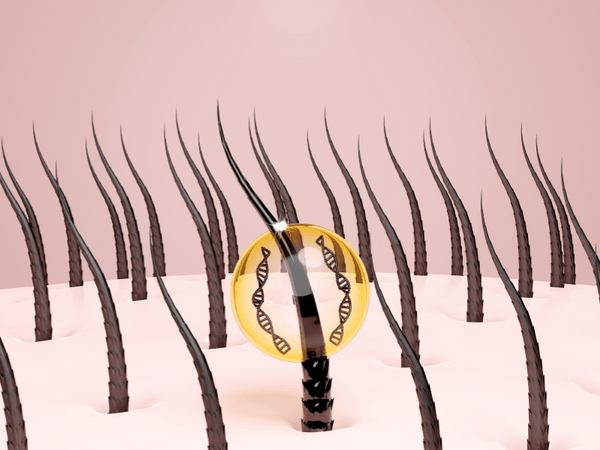
Nutrition plays a pivotal role in the health and growth rate of hair. Hair follicles require a rich supply of vitamins and minerals to produce healthy hair. Key nutrients that influence hair growth include:
-
Protein: Hair is primarily made of keratin, a type of protein. Adequate protein intake is essential for hair growth.
-
Iron: Iron deficiency is one of the leading causes of hair loss, particularly in women.
-
Vitamins A and C: These vitamins help produce sebum, which moisturizes the scalp and helps keep hair healthy.
-
B Vitamins: Especially biotin (vitamin B7), which is often touted for its role in hair health, although scientific support is mixed.
-
Zinc: is important for tissue growth and repair, including hair growth. Zinc deficiency can lead to hair loss.
Men and women may have different dietary patterns and nutritional status, which can impact the health and growth rate of their hair. For example, she suggested that if women have lower iron levels due to menstrual blood loss, it might affect their hair's growth and health more than men.
Lifestyle Factors Affecting Hair Growth

Lifestyle choices such as smoking, alcohol consumption, stress levels, and sleep patterns also significantly impact hair growth. For instance:
-
Stress: High stress levels can trigger a condition known as telogen effluvium, where hair shifts faster than normal from the growth phase to the resting phase, leading to increased shedding.
-
Smoking: Reduces circulation and blood flow to the scalp, hindering the supply of nutrients to hair follicles.
-
Sleep: Quality sleep is crucial as it helps regulate hormone levels, including those important for hair growth.
Environmental Conditions

Environmental factors such as exposure to pollutants, UV radiation, and harsh weather conditions can damage hair, affect its growth cycle, and lead to weaker, thinner hair. People in different regions or those with different exposure levels to these elements might experience variations in hair health and growth.
Common Myths and Misconceptions About Hair Growth
The topic of hair growth is rife with myths and misconceptions that can often lead to confusion and misguided hair care practices. It's important to address these myths to help individuals make informed decisions about their hair health. Here, we debunk some of the most persistent myths about hair growth, especially concerning gender differences.
Debunking Hair Growth Myths
Myth: Cutting hair frequently makes it seem long hair grows faster.
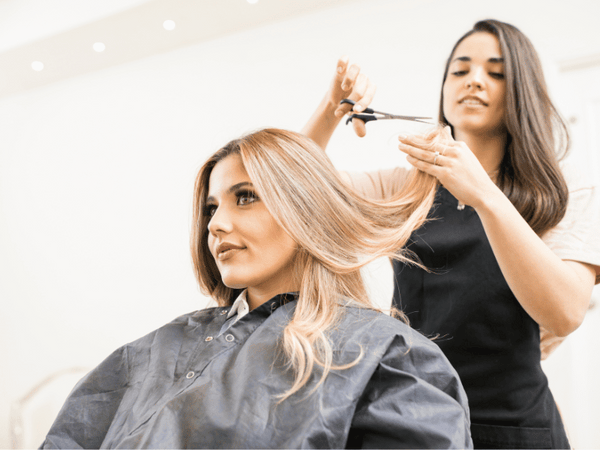
This common belief holds that more frequent haircuts can accelerate hair growth. However, hair grows from the roots, not the ends, so cutting the ends of your hair does not affect the growth rate at the bald scalp. Regular trims can prevent split ends and breakage, making hair appear healthier and fuller, but they do not increase the rate of hair growth.
Myth: The use of specific hair products can accelerate hair growth in both woman and men.

While the market is flooded with products claiming to boost hair growth, the reality is that no topical product can change the biological and genetic factors that determine hair growth rate. Some products can improve the health of your hair and scalp or prevent hair loss, but they do not speed up the growth process.
Myth: Washing your hair too often slows down hair growth.

The frequency of washing hair is often said to impact hair growth, with some claiming that too much washing can lead to hair loss and reduced growth. In truth, washing frequency has more to do with personal preference and hair type than hair growth. While over-washing can strip natural oils from the scalp, making hair dry and brittle, it does not affect the rate at which hair grows.
Myth: More expensive hair care products are more effective at promoting hair growth.

Price does not necessarily correlate with effectiveness when it comes to hair care products. The key is to look for products that suit your hair type and contain beneficial ingredients, rather than focusing solely on the price tag.
How Can Women Enhance Their Hair Growth?
While genetic and hormonal factors play a significant role in determining hair growth rates, there are effective strategies that women can employ to maximize their hair growth potential. By focusing on proper hair care and addressing specific needs, women can improve the health and length of their hair. Here are some practical tips and treatments that can support better hair growth for women.
Effective Hair Care Tips for Women

-
Maintain a Healthy Scalp: A healthy scalp is the foundation for healthy hair growth. Regularly cleanse the scalp to prevent buildup of oils, dirt, and product residue, which can clog follicles and hinder growth.
-
Use Gentle Hair Care Products: Choose less abrasive and more nourishing shampoos, conditioners, and styling products without sulfates.
-
Avoid Over-Styling: Minimize the use of heat styling tools like straighteners, curling irons, and blow dryers, which can cause hair damage and breakage. When using these tools, apply a heat protectant to reduce damage.
-
Protect Hair from Environmental Damage: Wear hats or use hair products with UV protection when spending extended periods in the sun. Similarly, protect hair from chlorinated water when swimming by wearing a swim cap.
Treatments and Remedies to Support Hair Growth

-
Scalp Massages: Regular scalp massages can increase blood flow to the scalp, promoting healthier hair growth. Use nourishing oils like coconut, almond, or castor oil for added benefits.
-
Essential Oils: Incorporating essential oils such as rosemary, lavender, and peppermint into your hair care routine can help stimulate hair follicles and promote growth. Always dilute essential oils with a carrier oil to avoid irritation.
-
Hair Masks: Use hair masks that contain ingredients like egg, avocado, or aloe vera to provide deep conditioning and nourishment to the hair.
Medical Treatments and Supplements

-
Minoxidil: Commonly known by its brand name Rogaine, minoxidil is an over-the-counter treatment that can help stimulate hair growth in women, especially those experiencing hair thinning.
-
Hair Growth Supplements: Supplements containing biotin, vitamin D, zinc, and iron can help improve hair growth if dietary intake is lacking. However, it’s essential to consult with a healthcare provider before starting any new supplement regimen.
Comparative Analysis of Hair Growth Over the Lifespan
Hair growth patterns can vary significantly throughout a person's life due to various biological and environmental factors. Understanding how these patterns change can provide insights into managing hair health effectively at different ages. This section explores the trends in hair growth from youth to old age and examines the impact of hormonal changes such as menopause and andropause on hair growth in both men and women.
Hair Growth Trends from Youth to Old Age
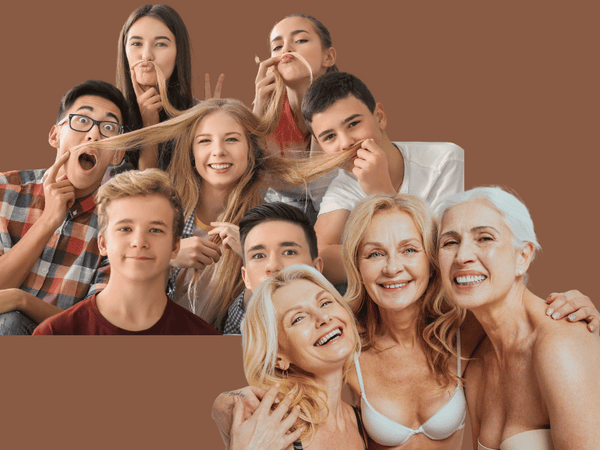
-
Childhood: Hair growth is generally healthy and robust in childhood, with a long anagen phase. Children’s hair typically grows faster and is healthier because of minimal exposure to damaging factors like styling, chemicals, and environmental pollutants.
-
Adolescence and Young Adulthood: During these stages, hormonal changes can significantly affect hair growth. The onset of puberty triggers increased hormone production, which can enhance hair growth but also lead to conditions like scalp acne or oily hair.
-
Middle Age: Hair growth begins to slow down as part of the natural aging process. The anagen phase shortens, and hair may start to thin and lose its pigment. Both men and women may notice a decrease in hair density during this period.
-
Senior Years: Hair growth further declines in old age, with more follicles entering the resting (telogen) phase and fewer remaining in the growth (anagen) phase. Hair becomes finer, and the scalp may become more visible.
The Impact of Menopause and Andropause on Hair Growth

-
Menopause: Women typically experience menopause in their late 40s to early 50s. The decline in estrogen and progesterone levels during menopause can lead to thinner hair and a shorter anagen phase. The decrease in female hormones also makes the effects of testosterone more pronounced, potentially leading to hair thinning similar to male pattern baldness.
-
Andropause: Men go through a gradual decrease in testosterone production, known as andropause. While this decrease is less abrupt than the hormonal changes women experience during menopause, it can still lead to thinner hair and a slower growth rate. Additionally, the increase in DHT (a derivative of testosterone) can exacerbate hair loss on the scalp.
Koze Health's Red Light Devices For Healthy Hair
In the quest for healthier, thicker, and faster-growing hair, technological advancements have introduced innovative solutions like red light therapy. Koze Health's red light devices stand out as a revolutionary option for individuals looking to enhance their hair health through non-invasive means. This section explores how Koze Health's red light devices work and the benefits they offer for hair rejuvenation.
How Red Light Therapy Works
Red light therapy involves the use of low-level red light wavelengths emitted directly onto the scalp. This light penetrates deep into the skin, reaching the hair follicles without causing any harm or discomfort. The therapy works by stimulating cellular activity and increasing blood circulation to the hair follicles, which is crucial for promoting hair growth and increasing hair density.
Benefits of Koze Health's Red Light Devices
-
Enhanced Hair Growth: The increased blood flow to the scalp helps to deliver more nutrients and oxygen to the hair follicles, encouraging stronger and faster hair growth.
-
Improved Scalp Health: Red light therapy helps reduce inflammation and increase collagen production, which can improve overall scalp health and create a better environment for hair growth.
-
Reduced Hair Loss: By energizing the follicles and improving cellular function, red light therapy can help reduce hair shedding and loss.
-
Convenience and Safety: Koze Health's devices are designed for easy and safe use at home, providing a convenient alternative to clinical hair treatments. They are non-invasive, pain-free, and have no known side effects, making them suitable for regular use.
Using Koze Health's Red Light Devices
Koze Health's red light devices are user-friendly and can be incorporated into your regular hair care routine. For optimal results, it is recommended to use the device for 10-15 minutes per session, several times a week. Consistency is key, as the effects of red light therapy are cumulative, in effect meaning that regular use over time yields the best outcomes.
Who Can Benefit?
Red light therapy is suitable for men and women experiencing various hair issues, including thinning hair, hair loss due to hormonal changes or aging, and those looking to boost the overall health and appearance of their hair. It is a versatile treatment that can complement other hair care practices and treatments.
In conclusion, Koze Health's red light devices offer a promising solution for anyone looking to enhance their hair health naturally. With its science-backed approach to stimulating hair growth and improving scalp health, it is an excellent addition to your hair care regimen, promising a safer, effective, fast, and convenient option for achieving healthier hair.
Conclusion
As we've explored the factors influencing hair growth and the innovative solutions available, it's evident that achieving healthy hair is a multifaceted endeavor that blends science, technology, and personal care practices. Whether addressing genetic, hormonal, or environmental influences, or utilizing advanced technologies like Koze Health's red light devices, there are numerous strategies available to enhance hair health and growth.
Key Takeaways:
-
Understanding Hair Growth: Knowledge of the biological and environmental factors that affect hair growth is crucial. By understanding these dynamics, individuals can better tailor their hair care practices to suit their specific needs.
-
Technological Advancements: Innovations such as Koze Health's red light therapy devices provide effective, non-invasive options for improving hair health and promoting growth, offering a modern solution to age-old hair concerns.
-
Holistic Approach: Combining good nutrition, proper hair care, and advanced treatments like red light therapy can lead to optimal hair health. This approach ensures that hair is not only growing but is strong, healthy, and vibrant.
In conclusion, maintaining or enhancing hair health requires a comprehensive approach that considers all aspects of an individual's lifestyle and health. By staying informed about the latest in hair care technology and understanding the underlying causes of hair growth variations, individuals can make educated decisions that lead to better hair health outcomes.
Let's continue to embrace both traditional and cutting-edge methods to ensure our hair remains as healthy and robust as possible.



